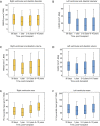Heart transplantation: the Berlin experience and perspectives
- PMID: 33708496
- PMCID: PMC7944199
- DOI: 10.21037/cdt-20-290
Heart transplantation: the Berlin experience and perspectives
Abstract
In patients with end-stage heart failure, heart transplants are now an ingrained practice, as they provide satisfying long-term results with good predictability and quality of life. The successful outcome has evolved from the development of effective immunosuppression, recognition of allograft rejection through diagnostic modalities and improvement in donor organ perfusion. Unfortunately, transplant availability is constrained by the shortage of donor organs and is therefore considered a casuistic therapy. The outcome is defined by unwanted effects of immunosuppressants, increased tumor occurrence and chronic transplant angiopathies. In the long term, patients fear primarily the occurrence of renal insufficiency and secondly osteoporosis with its skeletal complications and corresponding pain. Nevertheless, the overall quality of life is not very limited; on the contrary, patients demonstrate a surprisingly meaningful lives 10-20 years after the transplant. Their physical presentation is similar to those with varying co-morbidities. Most of the 20-year surviving patients are physically active and happy with their daily lives. Medical ambition has seen heart transplantation become reality and develop into an influential force regarding heart surgery, immunology, pharmacology, organ logistics and medical ethics. Its development has also molded our definitions of death and has driven public and health care approval of medical advances. It has provided a strong solidarity among politicians, sociologists, physicians and citizens. Problems regarding ethics continue to endure, and will forecast heart transplants as a defining, but temporary era in human medicine. The donor organ shortage has stimulated the use of resuscitated donor hearts and encouraged exploration and advancement of mechanical circulatory support systems and xenotransplantation as alternatives in the management of end-stage heart failure.
Keywords: Congenital heart diseases; heart failure; heart transplantation; vasculopathy xenotransplantation.
2021 Cardiovascular Diagnosis and Therapy. All rights reserved.
Conflict of interest statement
Conflicts of Interest: All authors have completed the ICMJE uniform disclosure forms (available at http://dx.doi.org/10.21037/cdt-20-290). The series “Heart Failure in the Young and Old: Insights into Various Therapies” was commissioned by the editorial office without any funding or sponsorship. RH served as the unpaid Guest Editor of the series and serves as an unpaid editorial board member of Cardiovascular Diagnosis and Therapy from July 2019 to Jun 2021. The authors have no other conflicts of interest to declare.
Figures



References
-
- Barnard CN. The operation. A human cardiac transplant: an interim report of a successful operation performed at Groote Schuur Hospital, Cape Town. S Afr Med J 1967;41:1271-4. - PubMed
-
- Stinson EB, Griepp RB, Dong E, Jr, et al. Results of human heart transplantation at Stanford University. Transplant Proc 1971;3:337-42. - PubMed
-
- Hetzer R, Warnecke H, Schüler S, et al. Heart transplantation--a two-year experience. Z Kardiol 1985;74 Suppl 6:51-8. - PubMed
Publication types
LinkOut - more resources
Full Text Sources
Other Literature Sources
